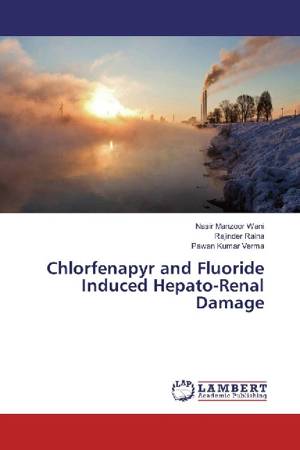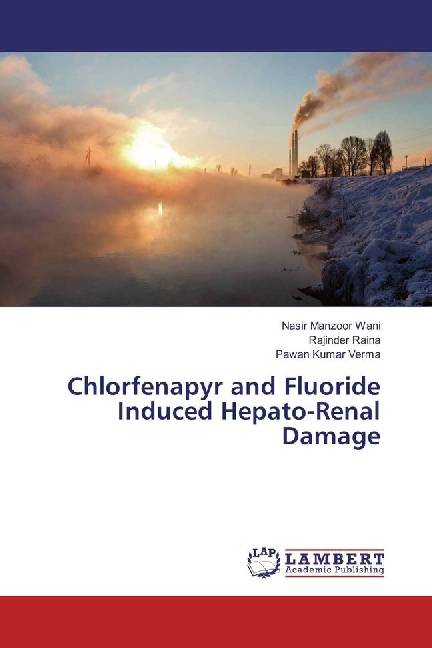
Je cadeautjes zeker op tijd in huis hebben voor de feestdagen? Kom langs in onze winkels en vind het perfecte geschenk!
- Afhalen na 1 uur in een winkel met voorraad
- Gratis thuislevering in België vanaf € 30
- Ruim aanbod met 7 miljoen producten
Je cadeautjes zeker op tijd in huis hebben voor de feestdagen? Kom langs in onze winkels en vind het perfecte geschenk!
- Afhalen na 1 uur in een winkel met voorraad
- Gratis thuislevering in België vanaf € 30
- Ruim aanbod met 7 miljoen producten
Zoeken
Chlorfenapyr and Fluoride Induced Hepato-Renal Damage
Nasir Manzoor Wani, Rajinder Raina, Pawan Kumar Verma
Paperback | Engels
€ 49,45
+ 98 punten
Omschrijving
Oral sub-acute toxic effects of chlorfenapyr alone and its interaction with fluoride was studied in wistar rats. Chlorfenapyr administered @ 96.8mg/kg daily for 28 days decreased cholinesterase and protein activity but elevated biochemical indices like phosphatases (ACP & ALP), aminotransferases (AST & ALT) in plasma. At 48.4mg/kg dose it enhanced plasma aminotransferases and ALP. Either daily dose of chlorfenapyr was capable of inducing peroxidation of erythrocyte membrane with decline in its glutathione levels. Decrease in the activities of other oxidative stress enzymatic components like SOD, GPx, was observed at higher dose. These changes get more pronounced with co-exposure of fluoride. The results revealed the potential of chlorfenapyr to induce oxidative hepatic damage due to altered oxidative stress parameters in hepatic tissue as well as by histopathological change such as swelling of central vein & hepatocyte degeneration. Such changes were more pronounced when rats were co-exposed to fluoride and chlorfenapyr.
Specificaties
Betrokkenen
- Auteur(s):
- Uitgeverij:
Inhoud
- Aantal bladzijden:
- 124
- Taal:
- Engels
Eigenschappen
- Productcode (EAN):
- 9783659974274
- Uitvoering:
- Paperback
- Afmetingen:
- 150 mm x 220 mm

Alleen bij Standaard Boekhandel
+ 98 punten op je klantenkaart van Standaard Boekhandel
Beoordelingen
We publiceren alleen reviews die voldoen aan de voorwaarden voor reviews. Bekijk onze voorwaarden voor reviews.









